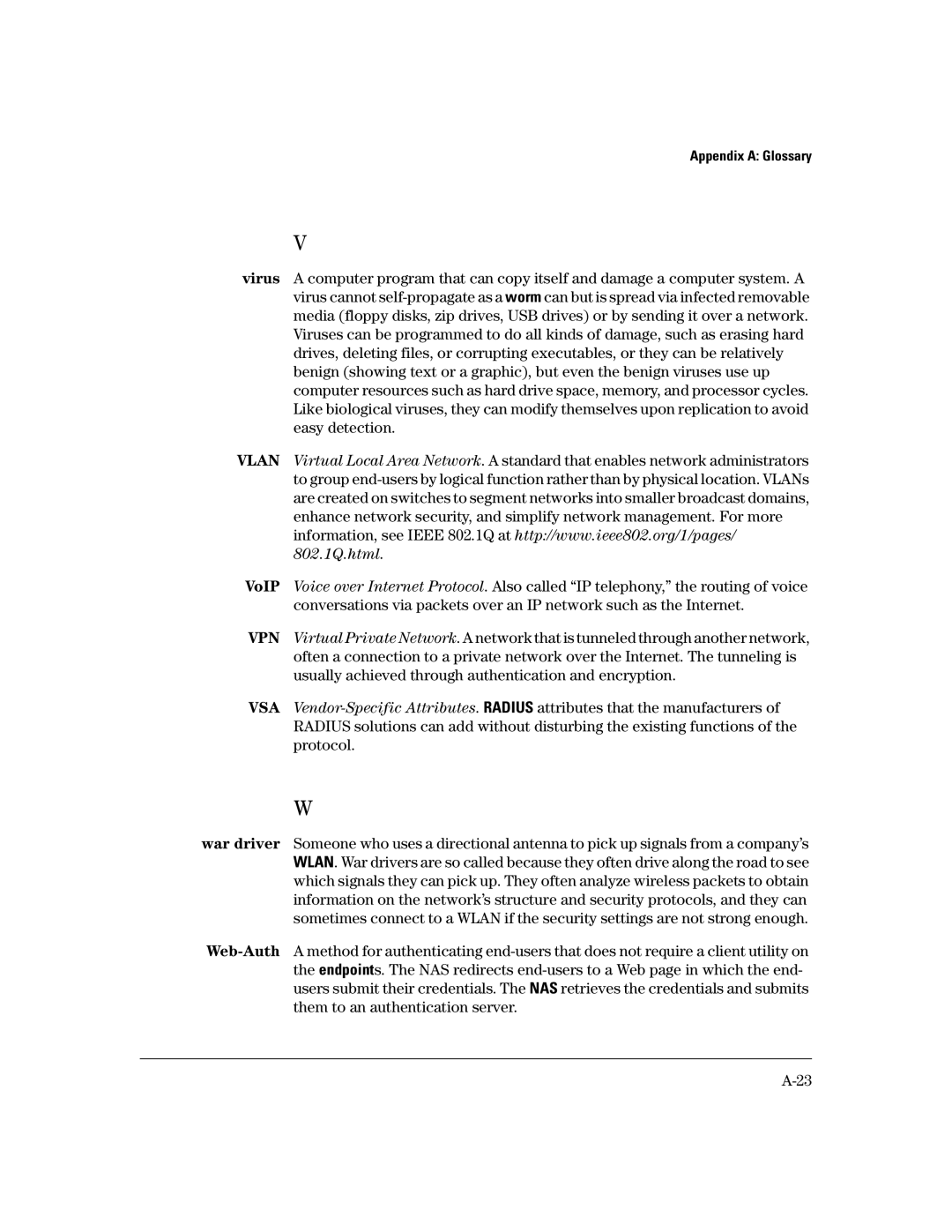Appendix A: Glossary
V
virus A computer program that can copy itself and damage a computer system. A virus cannot
VLAN Virtual Local Area Network. A standard that enables network administrators to group
VoIP Voice over Internet Protocol. Also called “IP telephony,” the routing of voice conversations via packets over an IP network such as the Internet.
VPN Virtual Private Network. A network that is tunneled through another network, often a connection to a private network over the Internet. The tunneling is usually achieved through authentication and encryption.
VSA
W
war driver Someone who uses a directional antenna to pick up signals from a company’s WLAN. War drivers are so called because they often drive along the road to see which signals they can pick up. They often analyze wireless packets to obtain information on the network’s structure and security protocols, and they can sometimes connect to a WLAN if the security settings are not strong enough.
